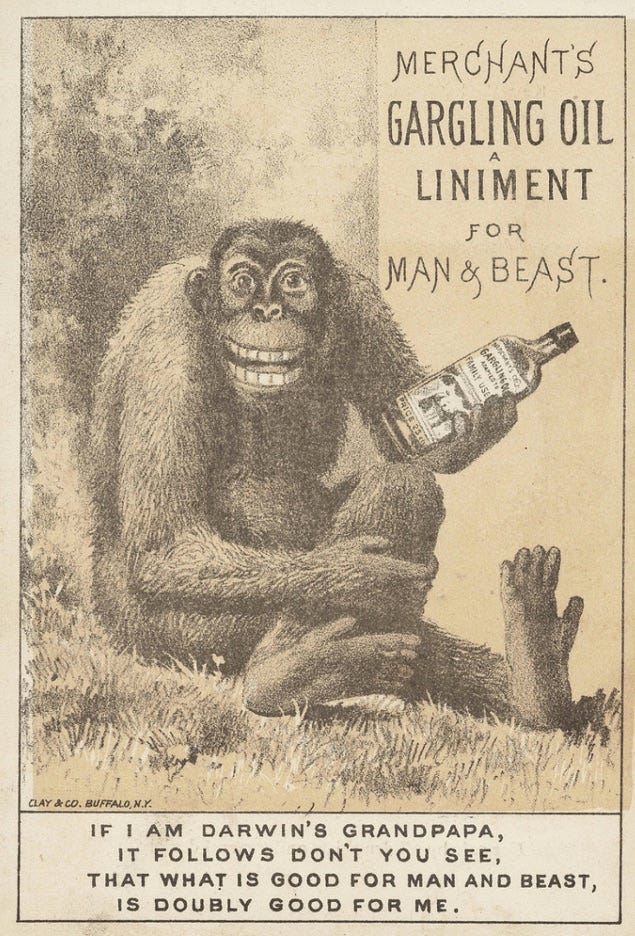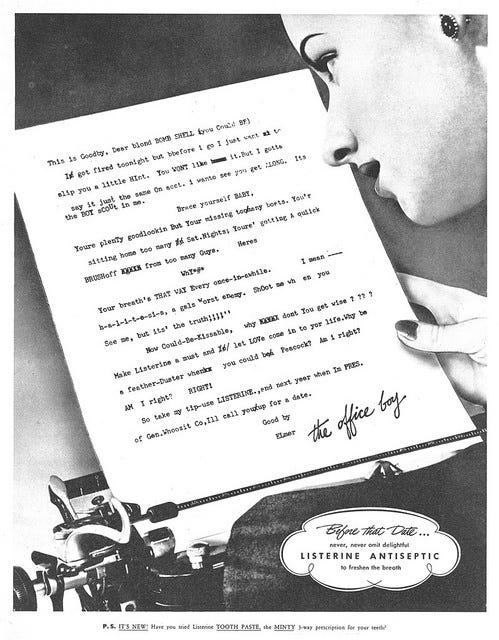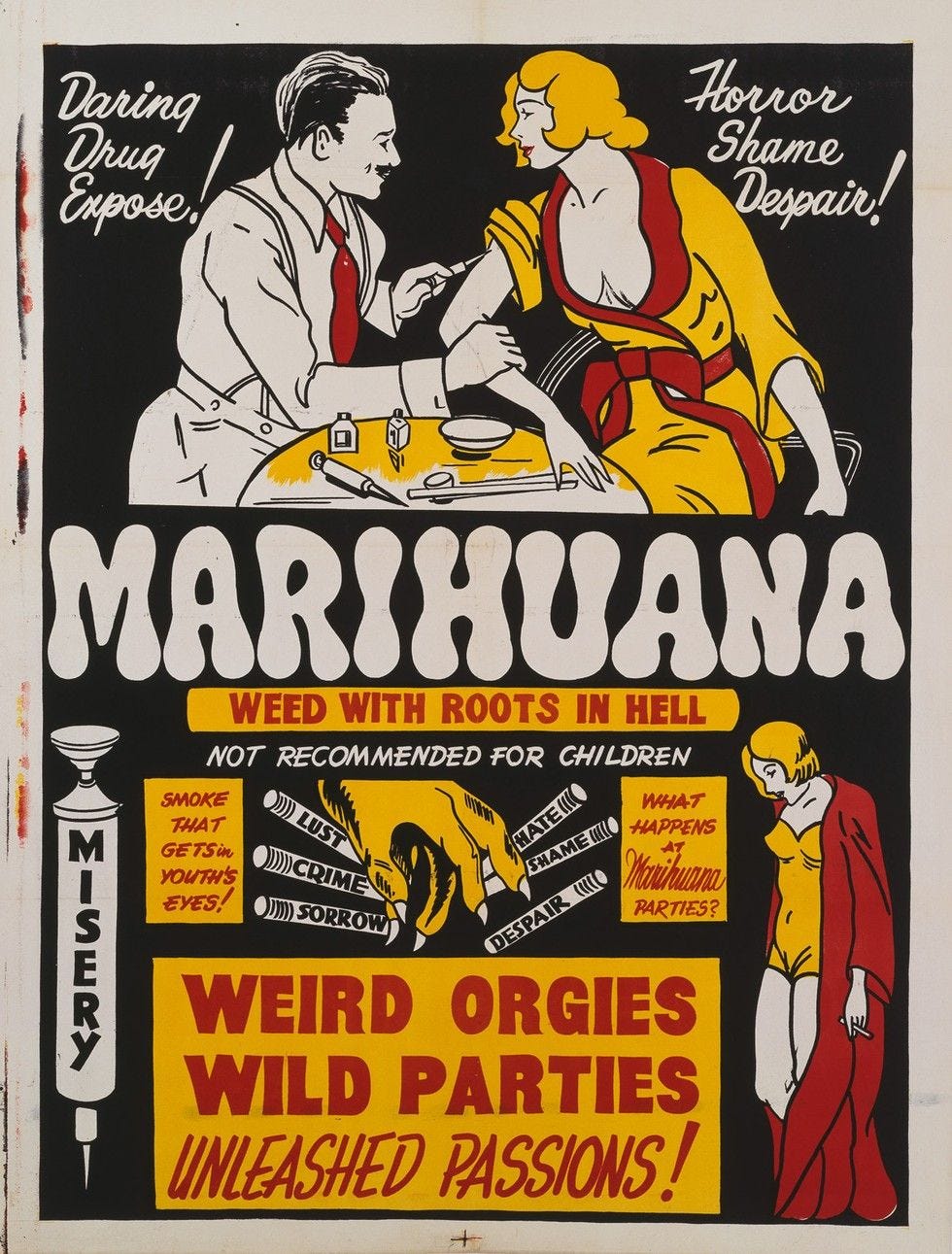From Seminal Writing To Dark Patterns
This 1477 ad praises “Sarum Ordinal”, a manual for priests — the book William Caxton just produced. The sheet describes the book and then states that “you can get a copy at the Red Pale” (the name of his shop) in Westminster, London. You will not be disappointed because the book is “good and cheap”.
“At the sign of his own head”
The early adopters of printed ads, just like the early proponents of digital technology were the main consumer demographic of their own craft. Being very affordable and increasingly popular among the rising middle class, printed ads got quickly picked up by the adjacent progressive businesses.
Medicine sellers invented a special ad format where instead of asserting a product’s presence, it offered a clear concern or pain relief.
This technique is still widely used by marketers and product description writers but with a far better ingenuity. Back then, ads were primarily placed in the back of a paper, were usually not very artistic, and relied heavily on the narration. For today’s product writer, those early paper ads are an incredible portal to the heart of early modern marketing and (why not?) UX writing. For example, the 1652’s first paper ad of the first coffee shop in London:


It’s fascinating in the way it addresses the chronic health issues a typical Londoner of the 17th century would possess. The enumeration-heavy story highlights the benefits of the drink that haven’t lost its relevance to this day. In fact, some of the strengths of coffee are even better phrased than most of our modern copies:
“It is a simple innocent thing, composed into a Drink, by being dryed in an Oven, and ground to Powder, and boiled up with Spring water, and about half a pint of it to be drunk, fasting an hour before, and not Eating an hour after, and to be taken as hot as possibly can be endured;” [sic]
“Merchant’s Gargling Oil”
As technological development introduced more advanced printing methods, including colorization or chromolithography, the copy had to give way to illustration. It never abandoned advertising but became an essential part of it and it’s the start of the 19th century when the voice and tone of commercial texts was shaped.
The affordability of printed ads attracted a lot of shady medicine producers and distributors. Quacks of different caliber flooded newspapers and telegraph poles with questionable remedy ads. Even though most of them have been debunked on multiple occasions, there are those having a rational kernel. An extensive library of Victorian quackery cases is here.


A noticeable trend of the 19–20th-century ads is the subtlety and emotive approach to persuasion. A lot had to do with a humorous and cartoonish depiction of those not using the product advertised. Plain mockery, bigotry, and racism in its finest.
“Gets them every time!”
The importance of product presentation also begins to shine with better printing media. A lot of the ads from that time demonstrate the current marketing tools like snapshots of the real-life situations. An attractive image of a successful person shifted the focus from the product to the person.
It was no longer about what the product does, but what it does for you.


The brands embraced the voice of an old friend giving guidance. Suspension dots representing pauses, an abundance of exclamation points, text formatting — all of those emotional markers used to highlight the value of the product. A clear reference to sexuality is particularly interesting about this seductive Duke hair pomade ad.
The language style of the Victorian ads and obvious glorification of the products blended into what we call “vintage ad culture” today.
“Horror, shame, despair”
The happy smiley pin-upish ads worked more like educational evidence. By promoting a certain product, the brands automatically promoted the industry and gave collateral PR to their rivals. The growth of commercial markets introduced more players to the game, ultimately leading to a harsher level of competition.
This is where aggression started creeping in. Manufacturers, by means of marketers, went to war with each other. With their eyes on the prize which is people’s money, that war didn’t shun any means. This Listerine ad is particularly disturbing. Someone thought it’d be a good idea to use a bad breath break-up letter as a slice-of-life scenario for an ad.


The road towards dark patterns started right there. The caricature depiction of reality, twisted social behavior norms, and total lack of a sense of proportion led to a high tolerance level for commercial texts.
If we step back for a second and retrospect, the seminal persuasive techniques used in the Medieval writing were fundamentally different. The words set in stone have magical power. The power to guide nations.
Gradually, like anything else, the power of words became a tool in the hands of the agenda-driven and opportunistic folk.


I now take an oath to research the area of propagandist texts from the most turbulent periods of time — before/during the two World Wars and the Cold War. It’s mind-boggling how many scary similarities are there to be found with the current content.
Digital fallacy
Disinformation is still information. We live with an innate sense of urgency and distrust built by the generations of manipulators. Every tiny spark of hope and trust gets nailed down by a greater disappointment. That’s the internet. It brought as much love and adulation as despair and confusion.
When everything is debatable and relative, clusterfuck is inevitable.
Writing to confuse
As soon as reading became a subject of psychological studies, taking advantage of people’s reading patterns became a thing. Online and digital media reading relies on simple principles that are created by the designers with a purpose. Now that purpose may come from the marketing needs which does not guarantee there will be no interjected tricks to make users opt in an additional cost.
The writers are not innocent either. We’re good at advocating the knowingly foul or insufficient functionality by masking it with exaggerated dignity. After all, it is all business. In that case, nothing really changed since the greater excommunications of our medieval past. However, deception is not only a political tool, it’s a marketing tool now.


Looking at the extensive dark pattern libraries which there are plenty, I can’t stop thinking of Caxton’s ad to buy his book. “Good and cheap”. When was the last time you heard anything as genuine and simple as that. I know, it’s been seven hundred years since that ad, but man…
There are hundreds of manipulative techniques forcing users into taking action. Most of them do rely on writing. Social pressure is one of them. This is an evolved version of the “missing out” approach where an ad elicits a customer’s feeling of inferiority.
